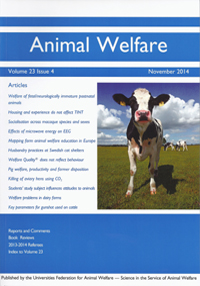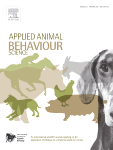Document type: scientific article published in Animal Welfare
Authors: S. Ogun, I. Viola, M. Obertino, I. Manenti, U. Ala, A. Brugiapaglia, L. Battaglini, G. Perona, M. Baratta
Preview: Rapid analysis of animal welfare is a crucial component of the assessment of the meat quality supply chain, ensuring management procedures confer optimum standards of welfare. Further, there is increasing interest in monitoring the welfare state of each individual animal. This study looked at transport and pre-slaughter management in terms of meat quality evaluated in two breeds (Biellese and Sambucana) across two different farming systems. Precision Livestock Farming (PLF) technologies were implemented, including accelerometer and rumination activity ear-tag sensors, as potential welfare indicators during transportation and pre-slaughter. Significant correlations were found between sensors' parameters, such as total activity and rumination and physical and chemical meat quality characteristics such as drip loss. Lambs with lower rumination and/or lower total activity were found to have lower drip loss indicating reduced meat quality. Sensors have the potential to help detect those animals particularly sensitive to stressors during transport and pre-slaughter handling and may allow real-time measurement of the impact of transport and handling in abattoirs, enabling better animal management via specific customised strategies.






